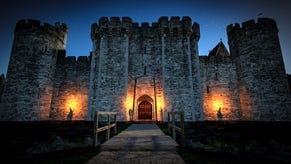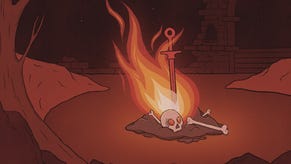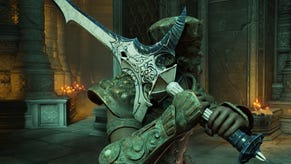Looking for the old Souls within Bluepoint's Demon's Souls remake
It's the highlight of the PS5 launch line-up, but what exactly has changed this time out?
Bluepoint Games' reimagining of Demon's Souls is the highest-rated launch game on PS5, and understandably so. The Austin studio has done a fantastic job of bringing its interpretation of Demon's Souls to Sony's brand-new console, furnishing its remake of a cult classic with mod-cons like a fully-featured photo mode, two different graphical options - and, of course, graphics to die for. Still, it's fascinating to note some of the things Bluepoint had creative license to change when remaking Demon's Souls - and to ask whether some elements of the original design have been lost in translation.
Demon's Souls had a rocky start. Initially pitched as an 'Oblivion' competitor, it struggled in its early stages of development. This is where Armored Core 4 and For Answer Director, Hidetaka Miyazaki was brought on to steer the ship, and make sure that Demon's Souls made it all the way to a final release. After an initial showing, EX-SIE President Shuhei Yoshida recalled calling it 'unbelievably bad'. Sony never published the original release of Demon's Souls outside of Asia.
Details from its developers are still scarce 10 years on, with only a few snippets of interviews with key staff being the only information we have about the conditions in which Demon's Souls was developed. But there's a clear narrative of strife, and struggling to meet internal expectations with Sony Japan. That struggle can be seen by way of what we're presented with in the game itself. The broken Archstone, full of cut content, frustrating swamps and "cheap" boss fights like the Dragon God, which was probably envisioned as more of a set piece than a quick, easy boss. But, the conditions and resources allocated to the game also reflected the world that From Software was trying to portray.
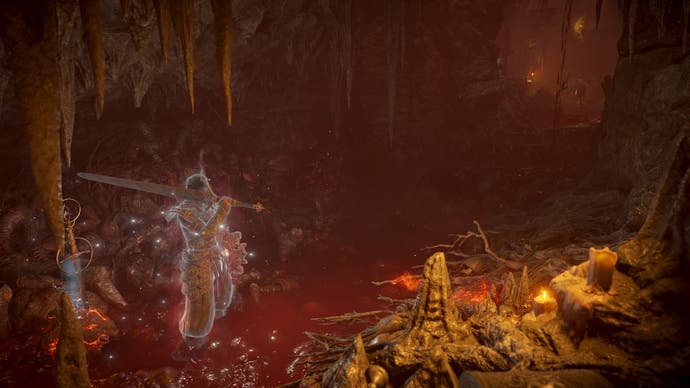
Everything about the kingdom of Boletaria in Demon's Souls showed us a nation that felt like it could have once existed in the Dark Ages. Purely utilitarian in its design, with ornate, fanciful things pushed to the fringes, or lost deep in the chasms of its own nation. We can see this illustrated to us in the form of the Shrine of Storms, or the Flamelurker's Lair, and on the fringes of the Boletarian Palace.
In Bluepoint's remake everything is painted over with a brush of grandeur, elements of design present in the original significantly altered. For example, the Flamelurker's lair, in the game's original release, was an old monument, dedicated to worship, littered with dragon bones, with a very naturalistic feel to its palette and design. In Bluepoint's reimagining of Demon's Souls, we instead have gushing flames, spurting out from every inch of the monument, with a clear 'boss ring' in the middle, all adorned with the flaming skull of a dragon. It feels at odds with the environmental design to have come before it. These are no longer old ruins, lost to time and history, but something that centres itself instead around the player's journey, a payoff for being lost in Stonefang's winding tunnels. It's no longer about the history of the world, it's now specifically about your journey to this place, and acting as a visual payoff, instead.
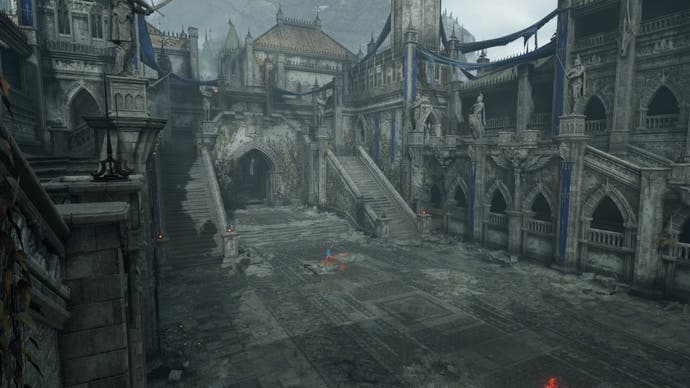
We see other redesigned elements in the form of the Boletarian Palace levels, which have ditched the more utilitarian, dark-ages look in lieu of grander, gothic architecture, too. It's something Bluepoint artist Adam Rehmann clarified when showing off concepts for the level over on Artstation, though there's something to be said about the grungier, emptier look of the original game. What if the Undead Burg in Dark Souls looked more ornate than it is, what if it was grander than it was? Would that have lessened the impact of seeing Anor Londo's stunning architecture for the first time? The aesthetic this creates in Bluepoint's Demon's Souls reimagining ends up feeling more evocative of Dark Souls 3 and Bloodborne. Bluepoint might have set out to recreate the visual identity of Boletaria, but did they just end up chasing the aesthetic of the games that came after it?
Enemies, NPCs and bosses have also been redesigned here, too. For the most part, these are purely tiny aesthetic changes, adding flourishes and detail onto existing designs. The iconic (and badly-named) Fat Official is a hallmark of Demon's Souls, who wore ornate, important-looking gear, and sported a grin as if they knew how irritating they were to encounter. In the remake, this ornate design is changed to a wart-ridden man, sporting a belly window., infested with warts. It's one revision of a design that's, simply put, just not as good.
There are a handful of other areas where some of that original spirit might have been lost. The 'Swamp of Sorrows' in Bluepoint's reimagining is declawed by the virtue of draw distances and changes to the amount of light present onscreen. Where in the original, navigating the swamp felt like a claustrophobic nightmare, lit only by torches to guide your way now you can see pretty much everything from when you set out at the start of the level, with clear pathing and a direction to go in, too. You can even see the Black Phantom, lurking in the swamp from a significant distance away. It dulls the impact.
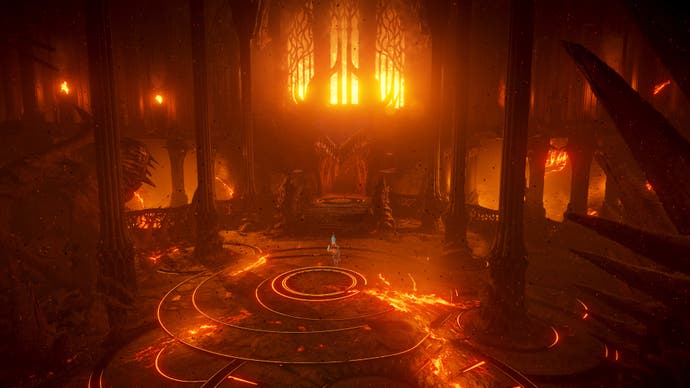
Of course, there are plenty more examples where Bluepoint has made a positive impact, surpassing what's present in the original. The Tower of Latria is still a joy to go through, and there are moments in the Shrine of Storms where it is really a cut above in many different ways. In many ways, the design changes act as a push-pull on how well it actually manages to pull off the spirit and atmosphere of the original game's intent. The Storm King's set piece battle is miles ahead of its 2009 counterpart, and the same can be said for things like the Fool's Idol boss fight, and the Prison of Hope area. There are clear dividing lines as to what's been significantly changed and what's been kept true to the source material.
The 2009 release saw an incredibly minimalistic soundtrack thanks to Shunsuke Kida, who has recently tweeted out in support of Bluepoint's rearrangement and orchestration in their Demon's Souls reimagining. However, one of the original game's strongest points was in its restrained use of sound in general - including its soundtrack whenever you reached a boss encounter. This restrained score made for some of the most impactful moments in the game, as when you duel Garl Vinland in the Valley of Defilement, as Maiden Astraea begs to be left in peace, surrounded by a river of plague-ridden babies. The sparse instrumentation and repetition of the track drench the level in a dark atmosphere. The music portrays the sadness of the characters just as much as their words or actions do.

Bluepoint's reimagining instead departs from the original pace and solemnity of the original game, and is slathered by an opulent orchestra. The track turns from the quiet salvation of the doomed to something that sounds like the final stand of an army. With a marching pace, and a choral bombast that just doesn't feel right. While in isolation, the track and the rest of the soundtrack sound incredible, in context feels instead as if Bluepoint were chasing the legacy of the series that the original game eventually spawned.
Despite the changes mentioned above, it has to be noted that the core of the experience of playing Demon's Souls does indeed remain intact, with some areas better for it, and in some areas, worse. The masterwork of the original notes a shift in the way games are played and thought about, so it was no easy task to recreate it. Bluepoint's remake ultimately ends up a very different entity to the original title.
As a tool for people to experience Demon's Souls for the first time, it works fantastically, but it also calls into question the preservation of the original Demon' Souls experience, a game whose servers have now been shut down for four years, meaning that, even if you owned a PS3 and wanted to properly experience the original title, you couldn't. A small community of fans is keeping the game alive on private servers, and even got it up and running on PlayStation 3 emulators, too. Bluepoint has put an enormous amount of love and effort into crafting this beautiful remake, and that shouldn't go amiss. Equally, the memories of such a historically significant game have to be kept alive, too.


